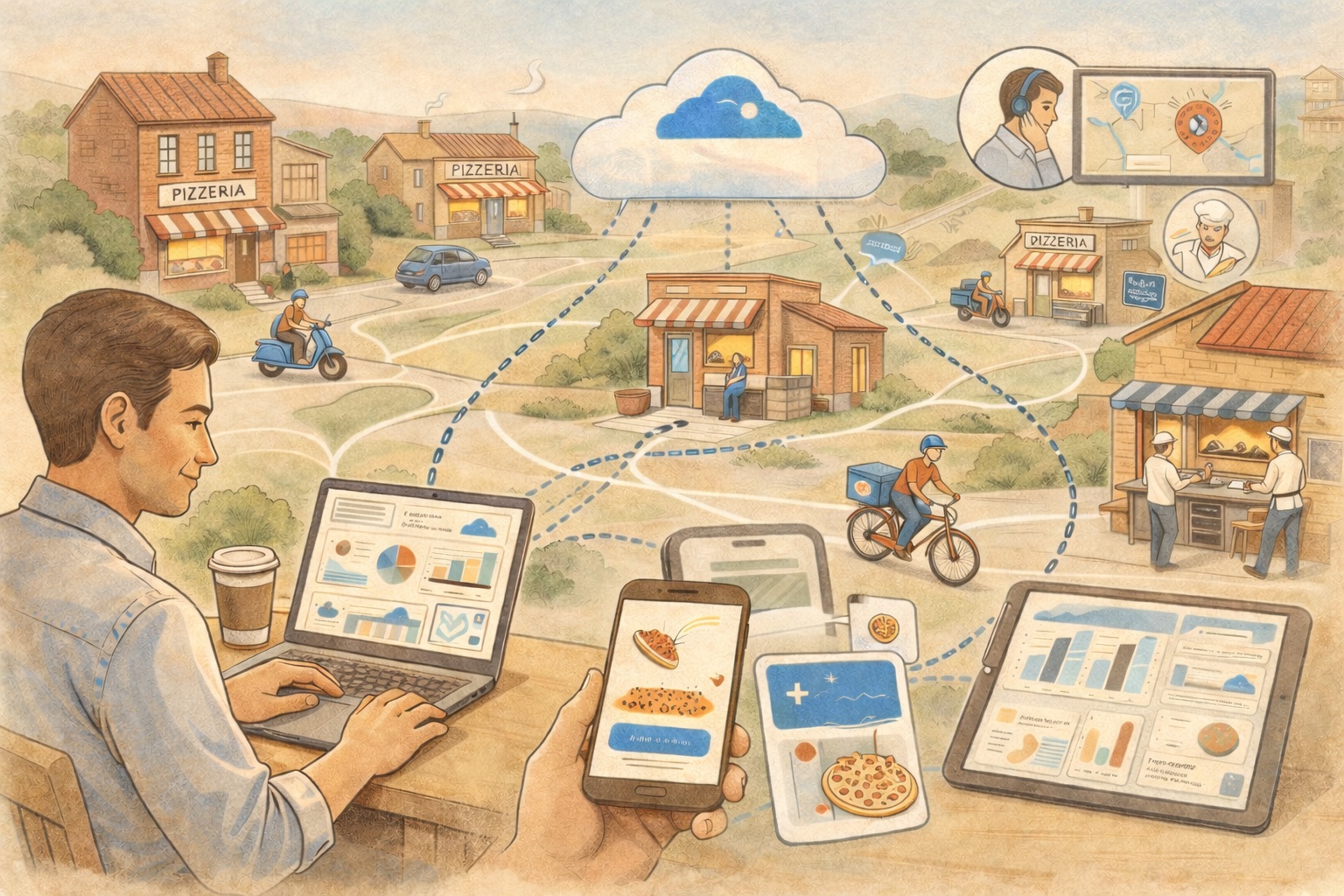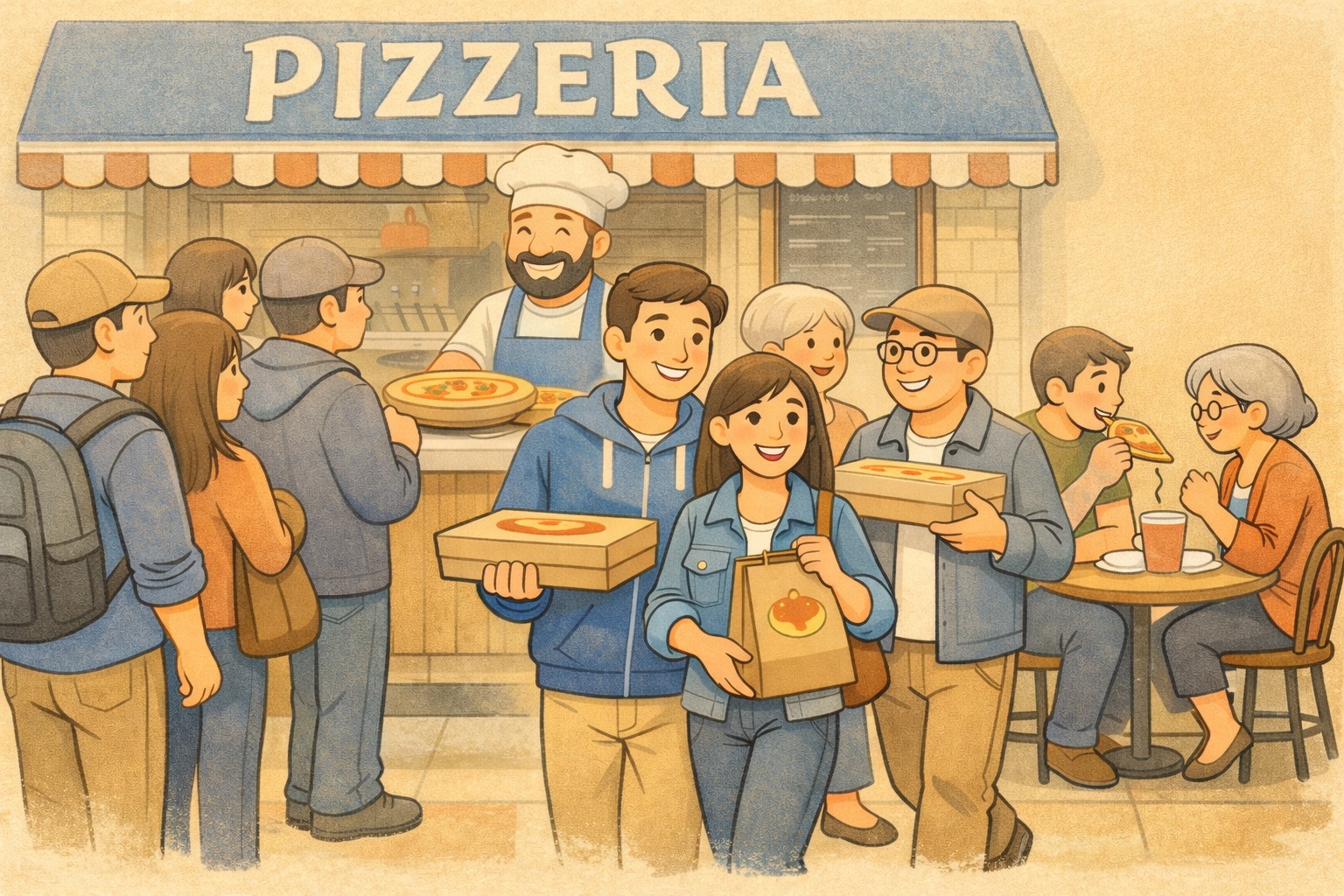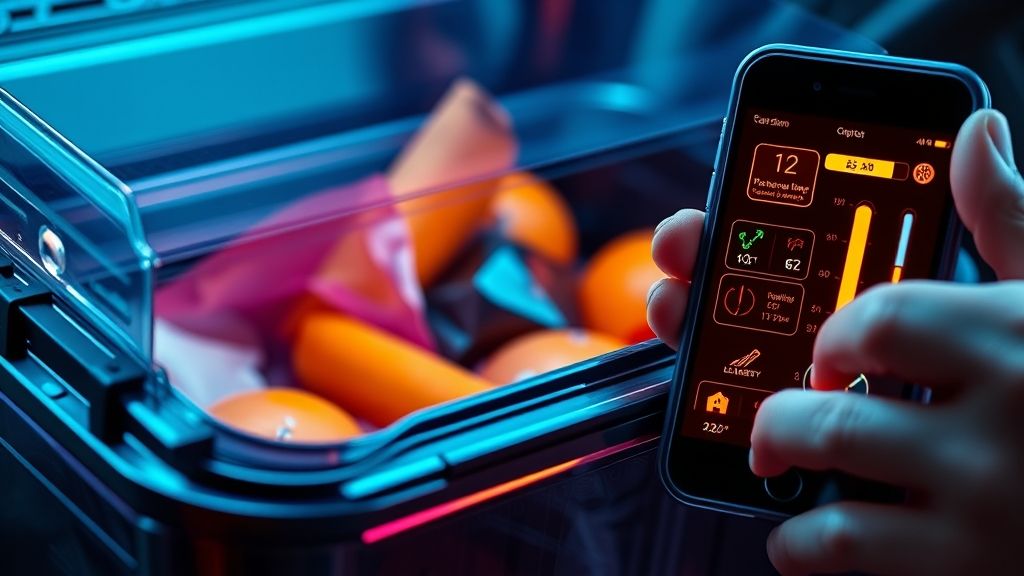
Scaling Multi-Location Operations with Restaurant Delivery Software: A Revenue Growth Blueprint
5 minute read
Scaling Multi-Location Operations with Restaurant Delivery Software: A Revenue Growth Blueprint
Article at a Glance:
- Modern restaurant delivery software enables multi-location businesses to standardize operations while maintaining flexibility for location-specific needs, driving operational efficiency and revenue growth
- Successful scaling requires sophisticated data synchronization across locations, with integrated systems handling everything from order distribution to temperature monitoring
- Quality control and resource optimization across multiple locations demand advanced features like IoT-enabled temperature monitoring and AI-driven demand forecasting
- Future-proofing delivery operations involves preparing for autonomous delivery systems and implementing predictive analytics for weather impact and customer behavior
As restaurants continue to see increased delivery demand, implementing the right technology infrastructure becomes crucial for managing complex multi-location operations. This article provides a comprehensive blueprint for scaling delivery operations while maintaining service quality and driving sustainable growth.
According to the National Restaurant Association, online food delivery has grown significantly in recent years, with many full-service restaurants reporting that it represents a larger share of their sales than before the pandemic. For operations directors and restaurant executives managing multiple locations, implementing effective restaurant delivery software presents both opportunities and unique challenges. This comprehensive guide explores how modern delivery systems enable operational scaling while maintaining quality and driving growth.
Understanding the Complex Landscape of Multi-Location Delivery
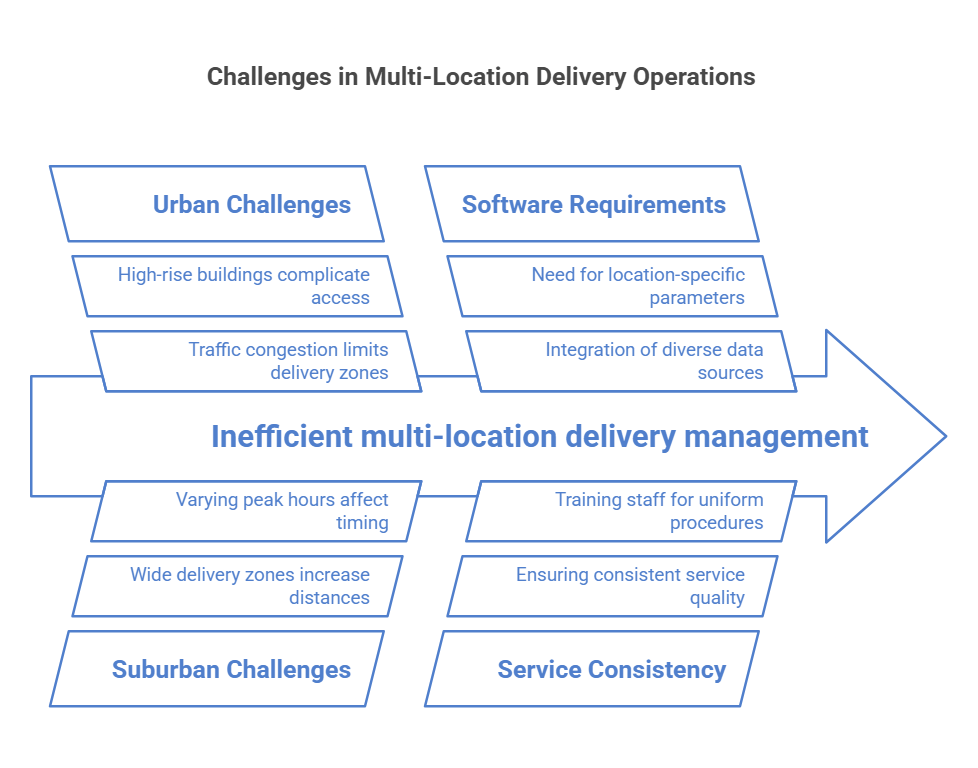
Managing delivery operations across multiple restaurant locations involves intricate challenges that impact every aspect of business operations. Consider a hypothetical regional pizza chain, CheeseGrid, operating in both urban and suburban locations across the Northeast. Their urban locations in Boston face dense traffic patterns and high-rise apartment deliveries, while their suburban Connecticut locations cover wider delivery zones with different peak hours. This scenario illustrates how each location’s unique characteristics require tailored solutions while maintaining brand consistency.
The operational complexity manifests in several critical areas that directly impact service quality and efficiency. Urban locations might restrict delivery zones to a 2-mile radius to ensure hot food delivery, while suburban locations can extend to 5-7 miles due to faster transit times. These variations demand sophisticated restaurant delivery software solutions that can handle location-specific parameters while maintaining consistent service standards.
Critical Operational Challenges
Managing delivery operations at scale introduces several fundamental challenges:
1. Data Synchronization and Utilization: Each location generates vast amounts of data from multiple sources, including order patterns, delivery times, and customer preferences. This data must be seamlessly integrated across all locations and actively used for:
- Predictive analytics for staffing decisions
- Real-time inventory management
- Customer preference tracking for personalized marketing
- Performance metrics analysis for continuous improvement
2. Quality Control Variations: Temperature maintenance for hot foods becomes more challenging in locations with longer delivery routes, requiring different packaging solutions and delivery time parameters.
3. Resource Distribution: Driver allocation needs vary significantly between locations based on order volume patterns and geographic coverage.
Technological Foundation for Scaling Success
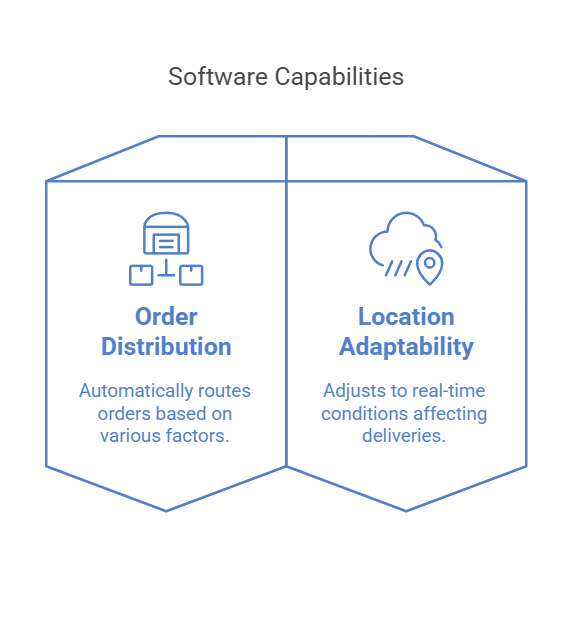
Restaurant delivery software serves as the cornerstone for managing these complex operations effectively. Modern solutions must integrate seamlessly with existing systems while providing the flexibility to accommodate future growth. The technology stack should address immediate operational needs while building a foundation for scaling.
Essential Software Capabilities
A robust restaurant delivery software solution must incorporate advanced features that enable efficient multi-location management:
1. Intelligent Order Distribution: The system should automatically route orders based on kitchen capacity, driver availability, and delivery zone optimization. For instance, during peak hours, the software might temporarily adjust delivery zones based on real-time kitchen capacity and driver availability.
2. Location-Specific Adaptability: The software must account for various factors including:
- Real-time traffic patterns and road closures
- Local weather conditions and their impact on delivery times
- Community events affecting delivery routes
- Seasonal variations in customer demand
Integration and Implementation Strategy

The success of multi-location delivery operations hinges on seamless integration between various systems and careful implementation planning. Common integration challenges include:
- Legacy System Compatibility: Many restaurants face issues with older POS systems that lack modern API capabilities. For example, a location using a 5-year-old POS system might struggle to sync menu data in real-time with delivery platforms.
- Data Synchronization Barriers: Different locations often use varying menu management systems, leading to inconsistencies in item availability and pricing across platforms.
- Third-Party Integration Complexity: Each delivery platform requires specific API integrations, creating potential conflicts with existing systems.
To address these challenges, organizations must first conduct a thorough assessment of existing technologies and processes across all locations. This evaluation should focus on identifying integration points, potential conflicts, and necessary upgrades before implementation begins.
Operational Excellence Through Standardization
Achieving operational excellence across multiple locations requires standardized processes that adapt to local market conditions. This balance between standardization and flexibility ensures consistent service quality while accommodating location-specific needs.
Quality Control and Performance Monitoring
Maintaining consistent quality across all delivery operations requires systematic monitoring and control measures. Modern temperature monitoring integration relies on IoT technology:
- Smart Packaging Systems: Implementation of IoT-enabled containers with built-in Bluetooth temperature sensors that continuously transmit data to the delivery software.
- Real-Time Monitoring: Temperature data is transmitted every 30 seconds through mobile devices carried by drivers, allowing immediate alerts if food temperature falls outside acceptable ranges.
Standardized Packaging Protocols
Effective packaging standardization requires a three-tier approach:
1.Base-Level Standards:
- Moisture-resistant containers for all locations
- Heat-retention materials for hot items
- Cold-chain packaging for frozen items
2.Distance-Based Modifications:
- Additional insulation layers for deliveries beyond 3 miles
- Specialized compartmentalization for mixed-temperature orders
3.Location-Specific Adaptations:
- Urban locations: Compact, stackable designs
- Suburban locations: Larger, multiple-order capable containers
Resource Optimization and Management
Effective resource management across multiple locations requires careful planning and dynamic allocation strategies to control costs while maintaining service quality. Organizations must develop dynamic resource allocation models that consider:
- Peak period variations between locations
- Driver availability and scheduling patterns
- Kitchen capacity and preparation times
- Local market demands and preferences
Future-Proofing Your Delivery Operations
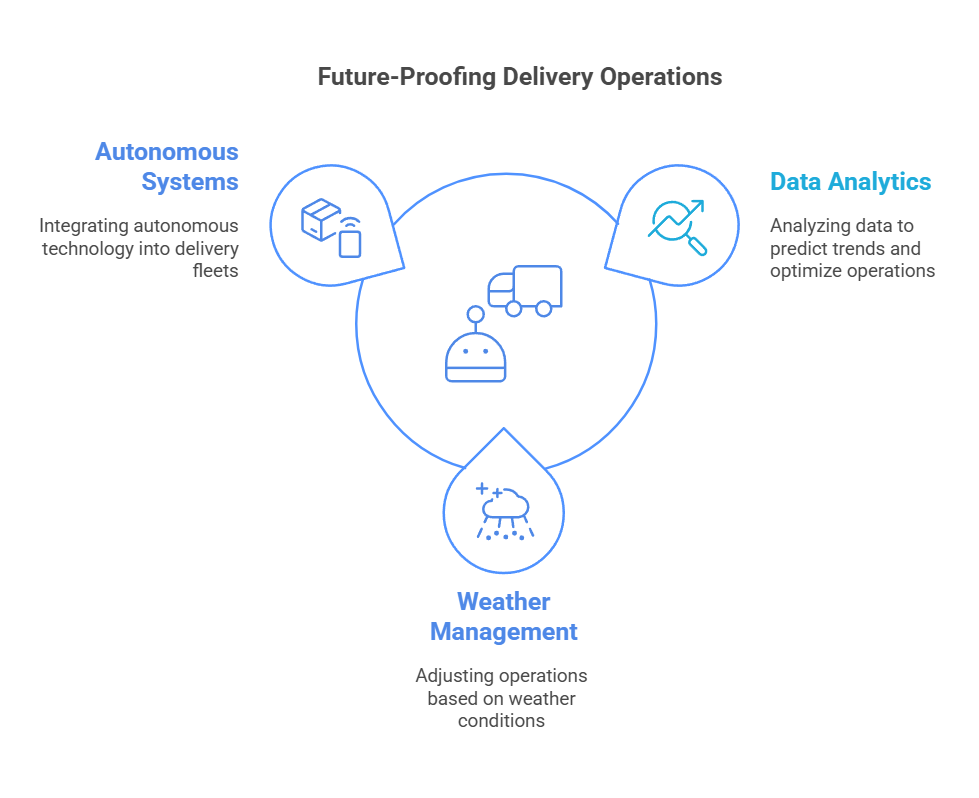
The future of restaurant delivery continues to evolve with emerging technologies and changing consumer preferences. Successfully scaled delivery operations must remain adaptable to these changes while maintaining operational efficiency.
Enhanced Data Analytics and Predictive Modeling
Modern delivery operations require sophisticated analytics capabilities:
1. Demand Forecasting:
- Historical order pattern analysis
- Weather impact modeling
- Local event correlation
- Seasonal trend prediction
2. Customer Behavior Analytics:
- Order frequency patterns
- Menu item preferences by location
- Delivery time sensitivity
- Price sensitivity modeling
3. Operational Optimization:
- Driver route efficiency analysis
- Kitchen capacity utilization
- Real-time resource allocation
- Quality control metrics
Weather Impact Management
Weather conditions significantly affect multi-location delivery operations in several ways:
1. Operational Adjustments:
- Dynamic delivery radius modification based on conditions
- Automated delivery time adjustments
- Route optimization for adverse weather
- Driver safety protocols activation
2. Customer Communication:
- Proactive delivery delay notifications
- Weather-based ordering suggestions
- Real-time delivery status updates
Autonomous Delivery Systems Integration
The implementation of autonomous delivery systems presents specific challenges and opportunities:
1. Infrastructure Requirements:
- Charging station networks
- Maintenance facilities
- Secure pickup/dropoff points
- Integration with existing systems
2. Operational Considerations:
- Hybrid human/autonomous fleet management
- Safety and liability protocols
- Customer acceptance strategies
- Regulatory compliance measures
Strategic Advantages of Effective Scaling
Successfully scaled delivery operations provide significant competitive advantages in today’s market. Organizations that effectively implement and manage multi-location delivery systems position themselves for sustained growth and market leadership.
The strategic benefits extend beyond immediate operational improvements to include enhanced market presence, improved customer satisfaction, and increased revenue potential. These advantages create a foundation for continued expansion and adaptation to evolving market conditions.
Conclusion
The future of restaurant delivery operations lies in the successful integration of technology, standardized processes, and adaptive management strategies. While robust software solutions are crucial, success equally depends on well-trained staff, effective management oversight, and superior customer service. Organizations that strike this balance while implementing effective scaling strategies will be best positioned to capture market opportunities and drive sustainable growth.
The emergence of artificial intelligence, machine learning, and autonomous delivery systems suggests a future where delivery operations become even more sophisticated and efficient. However, the human element remains critical in ensuring customer satisfaction and maintaining service quality. Organizations that build flexible, scalable systems while investing in their workforce today will be better prepared to adapt to emerging technologies and maintain competitive advantages in an increasingly digital marketplace.
Frequently Asked Questions (FAQs)
Q: How do temperature control systems integrate with delivery software?
A: Modern temperature control systems use IoT sensors embedded in delivery containers that connect via Bluetooth to drivers’ mobile devices. These sensors transmit real-time temperature data every 30 seconds to the central delivery software, which can automatically alert managers if temperatures fall outside acceptable ranges and adjust routing algorithms to prioritize at-risk deliveries.
Q: What role does artificial intelligence play in delivery optimization?
A: AI systems analyze historical delivery data, traffic patterns, and order volumes to optimize delivery routes, predict peak periods, and improve resource allocation across multiple locations. Machine learning algorithms continuously refine these predictions based on actual performance data, leading to increasingly accurate forecasting over time.
Q: How can organizations maintain consistent service quality across different delivery zones?
A: Through standardized processes, regular performance monitoring, and dynamic adjustment of delivery parameters based on location-specific conditions and constraints. This includes implementing standardized training programs, quality control checkpoints, and regular performance reviews across all locations.
Frequently Unasked Questions (FUQs)
Q: How does weather impact multi-location delivery operations and how can it be managed?
A: Weather impacts operations through multiple channels including road safety, delivery times, and order patterns. Management strategies include:
- Implementing dynamic delivery radius adjustments based on weather severity
- Maintaining backup driver pools for high-demand weather events
- Using predictive weather data to adjust staffing levels
- Installing weather-specific packaging protocols
- Implementing automated customer communication systems for weather-related delays
Q: What are the implications of autonomous delivery systems for current delivery operations?
A: The transition to autonomous delivery systems requires significant operational changes:
- Infrastructure investment in charging stations and maintenance facilities
- Development of new safety protocols and liability frameworks
- Staff retraining for system management roles
- Customer education and acceptance programs
- Compliance with evolving regulatory requirements
- Integration with existing delivery management systems
Streamline Your Restaurant Deliveries with Adora POS
Deliver faster, manage orders seamlessly, and enhance your customers’ experience with Adora POS’s powerful restaurant delivery software. Our cloud-based system is designed specifically for pizza restaurants, offering efficient order tracking, real-time delivery updates, and cost-saving management tools—all in one place.
Ready to optimize your delivery operations? Browse our website to discover how Adora POS can help you take control of your restaurant’s delivery service.
Let’s stay connected! Follow us for industry insights, product updates, and expert tips:

